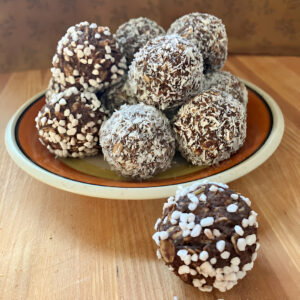
4
servings2
hours10
minutesmoderate
Red Fife has long been prized as a hearty bread wheat but our rustic adaptation of the delicate Italian gnocchi displays this heritage grain in an entirely new light. Served with a traditional Genoese pesto, the subtly sweet flavor of whole wheat has never tasted better.
2-3 large potatoes (about 650g)
2 egg yolks
Course kosher salt
55 grams basil leaves (Genovese)
100 grams parmigiano reggiano (grated)
65 grams pine nuts
10 grams garlic (2-3 cloves)
3 grams kosher salt
100 grams extra virgin olive oil
60 grams ice water
Tag @mainegrains on Instagram and hashtag it
Follow us @mainegrains on Pinterest
Follow us on Facebook